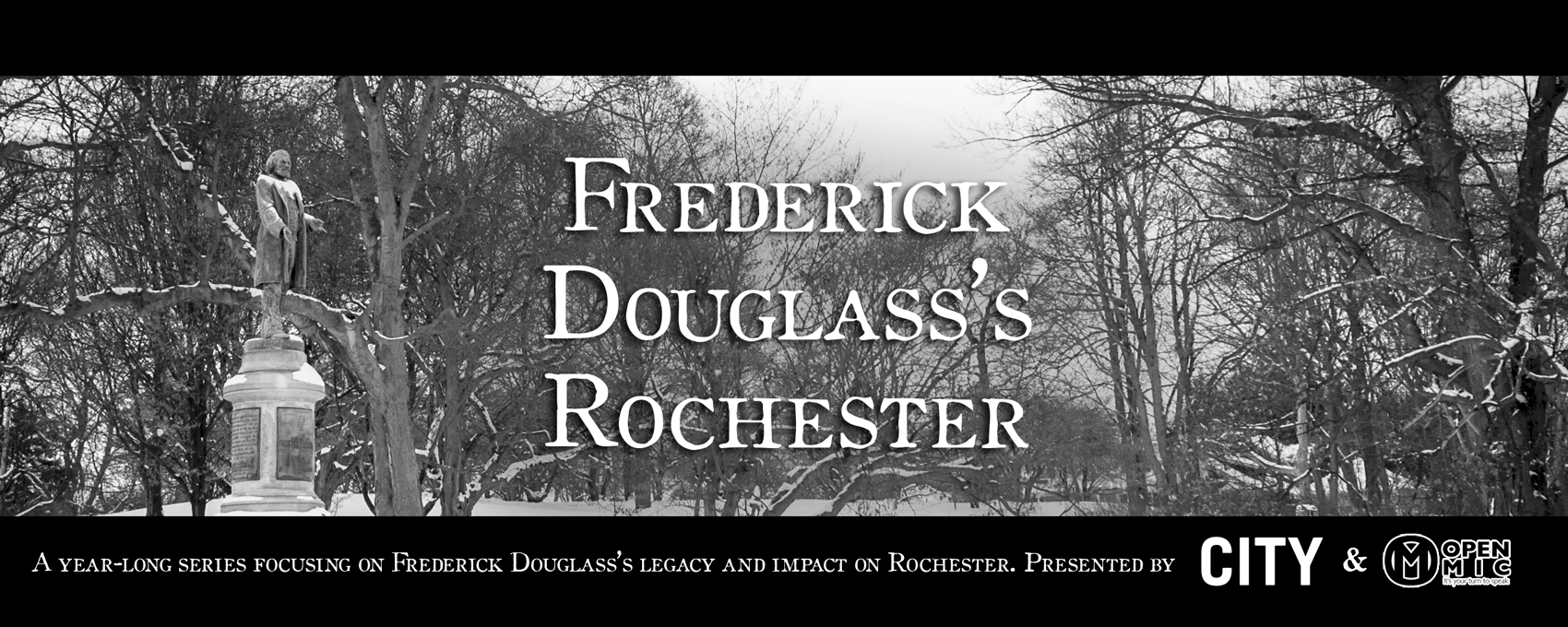For most of the 25 years Frederick Douglass and his family spent in Rochester, they lived in a home on South Avenue.
There was a farm, an orchard, and a barn on the land that was, at the time, on the outskirts of Rochester. It was a good spot for a home that frequently sheltered freedom seekers moving through the area along the Underground Railroad.
Today, School 12 is on that spot, but the building is named after the 20th century politician James PB Duffy. For years, a community group has led an effort to rename the school to commemorate the Douglass family. And that change could happen soon.
The city school board held a public meeting on Monday to discuss the name change, and the comments were overwhelmingly positive, says Board President Van White. The school board is considering taking an additional step to share the idea with School 12’s school-based planning committee, and a final vote on the name change could happen at the board meeting in June, White says.
To petition for a school name change, community members have to collect 100 signatures, but this petition was submitted with more than 300. Two people did speak against the change during Monday’s meeting: One thought the name shouldn’t be changed, and the other was hesitant because the March death of 14-year-old Trevyan Rowe, a School 12 student, was still fresh for the community.
The petition drive started about seven weeks ago, said Dr. David Anderson, a member of the national Frederick Douglass Bicentennial Commission and chair of the Rochester-Monroe County Freedom Trail commission, but it was part of a string of efforts going back more than 15 years.
Anderson is also a founding member of Akwaaba, the Heritage Associates. The organization conducts tours, educational presentations, and reenactments of historical figures from the 19th century, specifically those involved in the fight for freedom, as a way to share lessons from that time in history.
“I see that as critical to understanding how and why we stumble and fumble with current issues, such as racial segregation, and underperformance,” Anderson said via email. That is a key element in the effort to “persuade elected officials to name School 12 so that it reflects the experiences of the family that resided at that location for more than 20 years.”
The city’s South Avenue library branch, which is part of the same building complex as School 12, was renamed the Frederick Douglass Community Library in 2016. The Frederick Douglass R-Center is on the other side of the school.
Changing the school’s name to “Douglass,” Anderson said, “Rochester would have the opportunity to create a ‘renaissance’ campus, a center of learning, especially, for families and the teachers of their children.”
A new name hasn’t yet been settled on, but there’s a lot of support for either naming the school for Anna Murray Douglass — an active conductor on the Underground Railroad and Frederick’s wife of 44 years — or using Frederick and Anna Douglass.
“Anna Murray was as committed to the cause of abolition of slavery as her husband,” Kenneth Morris Jr. wrote in a letter to the school board. Morris is the great-great-great-grandson of Frederick and Anna Douglass, and the president of the Frederick Douglass Family Initiatives.
“It is vitally important to continue to lift up the life and legacy of our great American hero, Frederick Douglass. It is equally as important to elevate the heroine who shared the burdens of life with him and made his work possible,” Morris wrote.
Of the more than 50 schools in the Rochester City School District, only three are named after women.
There are no city schools named directly after Frederick Douglass. There was the Frederick Douglass Preparatory School, located on Fernwood Park, but it is now the Northeast College Preparatory School and Northwest College Preparatory School at Douglass Campus.
The Douglass home on South Avenue was their second in Rochester. For their first four years here, the family lived on Alexander Street, near what is now East Avenue. Then in 1852, they built a new home on South Avenue, and lived there for two decades before a fire destroyed the home on June 2, 1872. A definitive explanation for the fire has never been known, but it’s commonly believed to have been the work of an arsonist.
Douglass had already been spending more of his time in Washington, D.C., and the fire made the move permanent.
Anderson has spoken in the past about the need for incorporating more of Douglass’s works into Rochester curriculum. And White echoed that sentiment.
“This idea doesn’t have to stop at signage changes outside that building,” White said. “This can be as big as people can imagine it. We have a wonderful example of how you can imagine beyond the struggle, beyond your current situation — Frederick Douglass is that example.”

